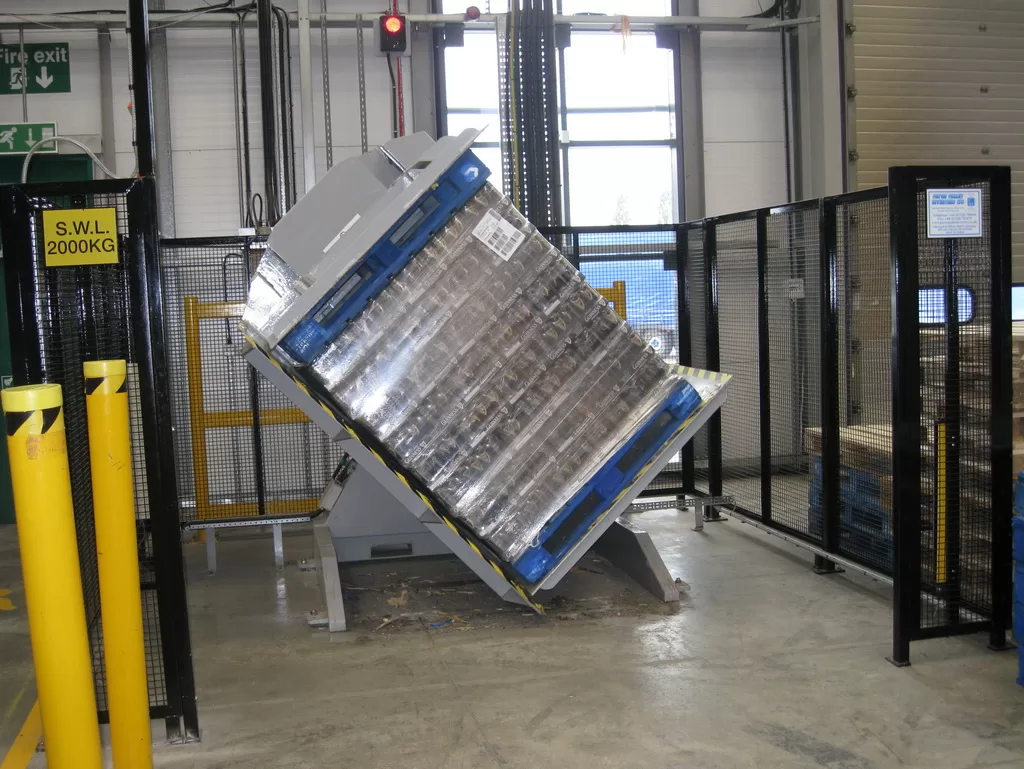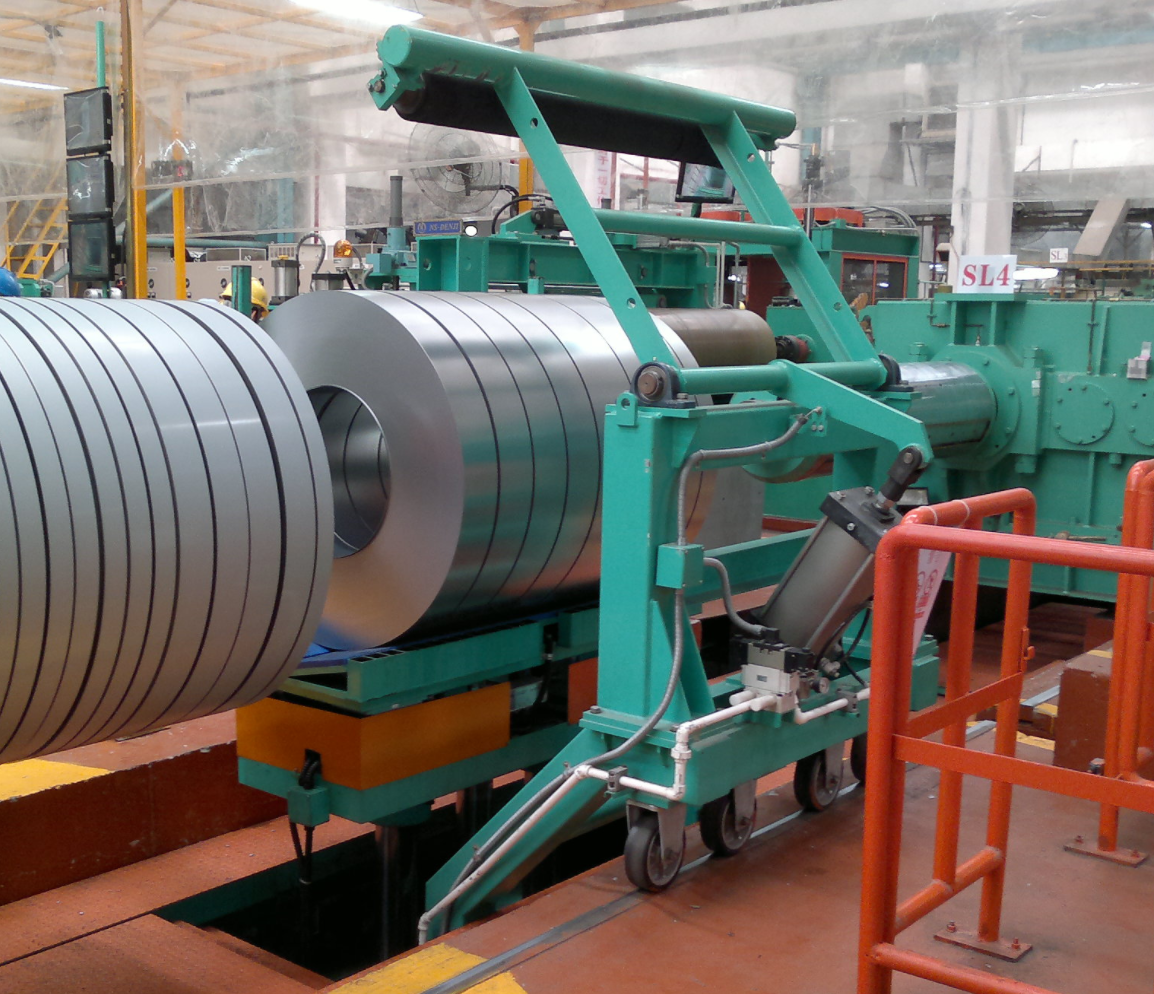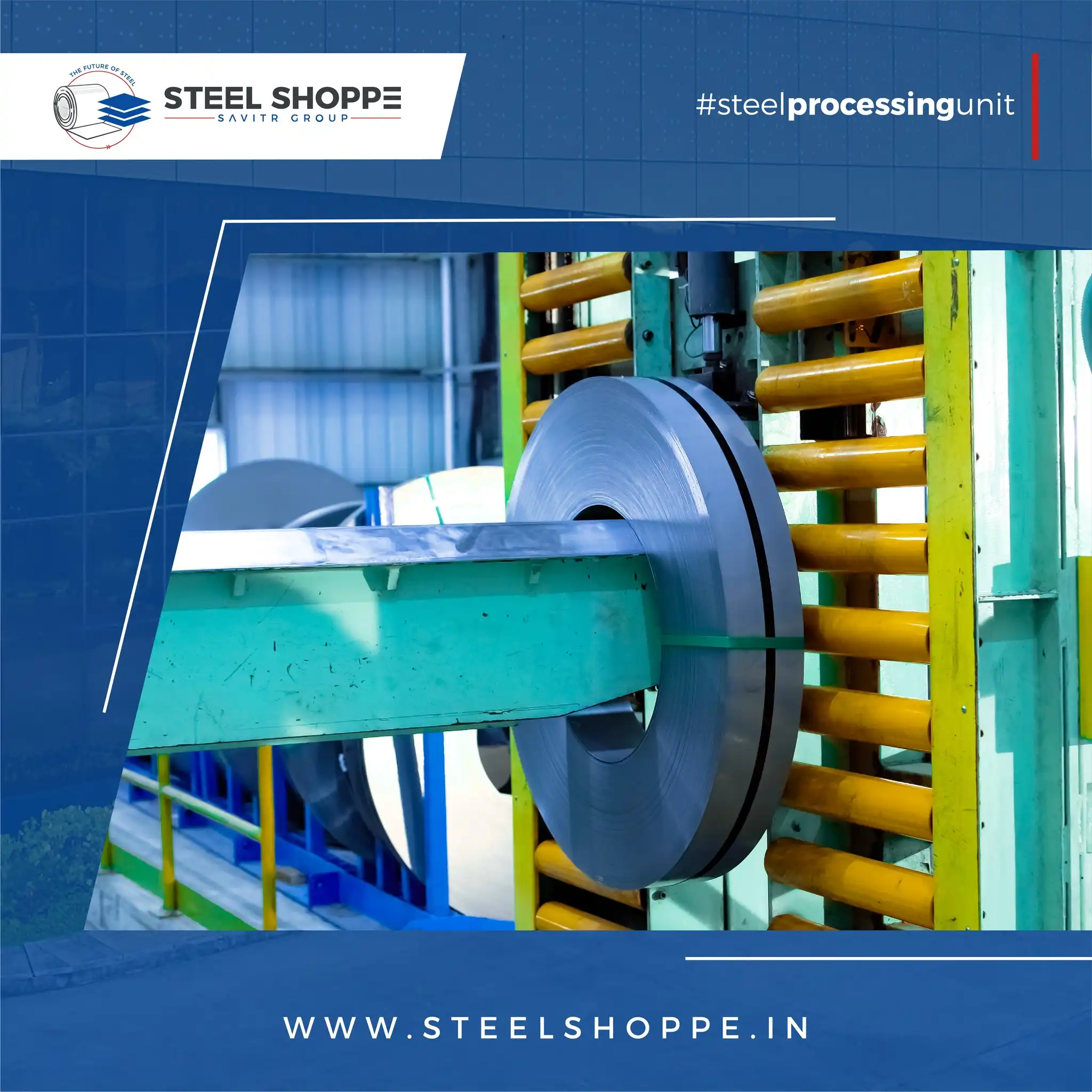Steel coil packing is a critical process in the metal industry, ensuring products are safely and efficiently prepared for shipping and storage. Improving efficiency in this area translates directly to reduced operational costs, increased throughput, and enhanced customer satisfaction. Optimizing your steel coil packing process is essential for maintaining a competitive edge.
Improving efficiency in steel coil packing can be achieved through automation, optimized material usage, and streamlined workflows. Implementing automated coil packing lines reduces manual labor, minimizes material waste, and significantly speeds up the packaging process, leading to substantial gains in productivity and cost savings.
This article delves into actionable strategies for enhancing efficiency in steel coil packing. We will explore key areas such as automation, material optimization, and process streamlining, providing a comprehensive guide to elevate your packing operations. Continue reading to discover how to transform your steel coil packing process for maximum efficiency.

1. Embracing Automation for Streamlined Operations
In today’s fast-paced industrial landscape, automation is no longer a luxury but a necessity for achieving peak efficiency. Automating steel coil packing processes offers a pathway to significant improvements in speed, consistency, and cost-effectiveness. By reducing reliance on manual labor, businesses can minimize errors and boost overall output.
Automating steel coil packing dramatically increases operational efficiency by accelerating the packaging process and minimizing manual intervention. Automated systems ensure consistent wrapping, strapping, and labeling, significantly reducing packaging time per coil. This leads to higher throughput, lower labor costs, and improved workplace safety, making automation a cornerstone of efficiency improvement.
To truly understand the transformative power of automation, we need to examine its multifaceted benefits and consider how different levels of automation can be implemented to suit varying operational needs. Let’s break down the advantages and explore practical automation solutions for steel coil packing.
1.1. The Multifaceted Advantages of Automation in Coil Packing
Automation in steel coil packing extends far beyond simply speeding up the process. It offers a range of benefits that contribute to a more efficient, reliable, and cost-effective operation. These advantages can be categorized into several key areas:
1.1.1. Enhanced Speed and Throughput
Automated systems operate at a consistently high speed, significantly outperforming manual packing. Machines work tirelessly without breaks, maintaining a steady pace that drastically reduces packaging time per coil. This increased speed directly translates to higher throughput, allowing businesses to process more orders and meet demanding production schedules.
1.1.2. Consistent Packaging Quality
Unlike manual packing, which can be prone to human error and variability, automated systems deliver consistent and precise packaging every time. Machines are programmed to apply the correct amount of wrapping material, strapping tension, and labeling accuracy, ensuring uniform and high-quality packaging across all coils. This consistency minimizes the risk of damage during transit and enhances the professional appearance of the products.
1.1.3. Reduced Labor Costs
Automation significantly reduces the need for manual labor in the packing process. By automating tasks such as wrapping, strapping, and handling, businesses can lower their labor costs and reallocate human resources to more strategic roles. This is particularly beneficial in regions with high labor costs or where finding and retaining skilled manual labor is challenging.
1.1.4. Improved Workplace Safety
Steel coil packing can be physically demanding and potentially hazardous for workers. Manual handling of heavy coils and packaging materials increases the risk of injuries such as strains, sprains, and cuts. Automation minimizes human involvement in these hazardous tasks, creating a safer working environment and reducing the incidence of workplace accidents.
1.1.5. Optimized Material Usage
Automated systems are designed to use packaging materials efficiently, minimizing waste and reducing material costs. Precision controls ensure that only the necessary amount of stretch film, strapping, and other materials are used for each coil. This optimized material usage not only saves money but also contributes to more sustainable and environmentally friendly operations.
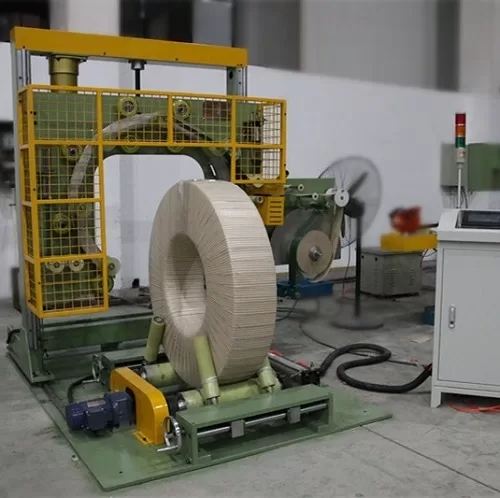
To quantify these benefits, consider the following comparison between manual and automated coil packing:
| Feature | Manual Packing | Automated Packing | Improvement with Automation |
|---|---|---|---|
| Packing Speed | Low (coils/hour) | High (coils/hour) | 3x – 5x faster |
| Packaging Consistency | Variable, prone to human error | Consistent, machine precision | Up to 99% accuracy |
| Labor Costs | High (multiple workers required) | Low (minimal operator oversight) | 50% – 70% reduction |
| Workplace Safety | Higher risk of injury | Lower risk, safer environment | 60% – 80% safer |
| Material Usage | Potential for material waste | Optimized, minimal waste | 15% – 25% material saving |

By embracing automation, businesses can achieve significant gains across these critical areas, transforming their steel coil packing operations into efficient, reliable, and cost-effective processes.
2. Material Optimization for Cost-Effective Packaging
Selecting the right packaging materials and utilizing them efficiently is paramount for cost reduction and environmental responsibility in steel coil packing. Optimizing material usage not only lowers direct material expenses but also reduces waste disposal costs and enhances the sustainability of operations.
Optimizing material usage in steel coil packing involves selecting appropriate, high-quality materials and employing precision application techniques. Using the correct type and amount of stretch film, strapping, and edge protection minimizes waste, reduces material costs, and ensures adequate product protection. This approach contributes to both economic savings and environmental sustainability.
Let’s explore strategies for material optimization, focusing on material selection, efficient application methods, and waste reduction techniques to achieve cost-effective and sustainable steel coil packaging.
2.1. Strategies for Material Efficiency in Coil Packing
Material optimization in steel coil packing is a multifaceted approach that involves careful material selection, efficient application techniques, and a focus on minimizing waste. By implementing these strategies, businesses can significantly reduce their packaging material costs and enhance the sustainability of their operations.
2.1.1. Selecting the Right Packaging Materials
Choosing the appropriate packaging materials is the first crucial step in material optimization. The selection should be based on the specific requirements of the steel coils, considering factors such as:
- Coil Weight and Dimensions: Heavier and larger coils may require stronger and more durable packaging materials.
- Transportation and Storage Conditions: Coils that will be exposed to harsh weather or long transit times need robust protection against moisture, corrosion, and physical damage.
- Corrosion Protection Needs: For steel coils susceptible to rust, using VCI (Volatile Corrosion Inhibitor) films or coatings can be essential.
- Budget Constraints: Balancing the cost of materials with the required level of protection is important.
Commonly used packaging materials for steel coils include:
- Stretch Film: Provides a protective layer against dust, moisture, and minor abrasions. Different grades of stretch film are available for varying levels of strength and puncture resistance.
- VCI Film: Specifically designed to prevent corrosion by releasing vapor corrosion inhibitors, ideal for long-term storage and transport.
- Paper and Cardboard: Used for edge protection, interleaving, and providing additional cushioning.
- Steel or Plastic Strapping: Securely holds the coil together and provides structural integrity for handling and transit.
- Woven Fabric or Composite Wraps: Offer robust protection against physical damage and weather elements, suitable for heavy-duty applications.
2.1.2. Efficient Application Techniques
Even with the right materials, inefficient application can lead to excessive material consumption and increased costs. Efficient application techniques are crucial for material optimization:
- Pre-stretch Film Technology: Using stretch film with pre-stretch capabilities allows for maximum film elongation with minimal film usage, reducing the amount of film needed per coil.
- Automated Wrapping Machines with Precision Controls: Automated coil wrapping machines can be programmed to apply the exact amount of stretch film and strapping required, minimizing overlaps and waste.
- Proper Tension Control: Maintaining optimal tension during wrapping and strapping ensures secure packaging without overusing materials.
- Standardized Packaging Procedures: Implementing standardized procedures and training for manual packing operations helps ensure consistent and efficient material application.
2.1.3. Waste Reduction and Recycling
Minimizing waste and maximizing recycling efforts are integral to material optimization and sustainability. Strategies for waste reduction and recycling include:
- Source Reduction: Optimizing packaging designs to use less material in the first place.
- Material Reuse: Exploring opportunities to reuse packaging materials where feasible.
- Recycling Programs: Implementing recycling programs for used stretch film, paper, and cardboard.
- Using Recycled Content Materials: Choosing packaging materials made from recycled content to reduce the environmental footprint.
- Regular Audits of Material Usage: Conducting regular audits to identify areas where material waste can be reduced and efficiency improved.
By focusing on material selection, efficient application, and waste reduction, businesses can achieve significant cost savings and contribute to more environmentally responsible steel coil packing operations.

3. Streamlining Workflows for Enhanced Productivity
Efficient workflows are the backbone of any productive operation. In steel coil packing, streamlining workflows can significantly reduce bottlenecks, minimize downtime, and enhance overall productivity. Optimizing the movement of coils through the packing process, from initial handling to final dispatch, is key to achieving efficiency gains.
Streamlining workflows in steel coil packing involves optimizing the sequence of operations, minimizing unnecessary movement, and implementing efficient material handling systems. By analyzing and refining each step of the packing process, from coil loading to labeling and dispatch, businesses can reduce cycle times, increase throughput, and improve overall operational efficiency.
Let’s explore practical strategies for streamlining workflows, focusing on process analysis, layout optimization, and technology integration to enhance productivity in steel coil packing.
3.1. Strategies for Workflow Optimization in Coil Packing
Workflow optimization in steel coil packing is about creating a smooth, efficient, and logical flow of materials and operations. By carefully analyzing and refining each step of the process, businesses can eliminate bottlenecks, reduce waste, and significantly enhance productivity.
3.1.1. Process Analysis and Mapping
The first step in streamlining workflows is to thoroughly analyze the existing packing process. This involves:
- Process Mapping: Creating a detailed map of the current packing process, outlining each step from coil arrival to dispatch.
- Time Studies: Conducting time studies to measure the duration of each step and identify bottlenecks or areas of delay.
- Motion Analysis: Observing worker and material movement to identify inefficiencies and unnecessary motions.
- Data Collection: Gathering data on throughput, cycle times, and error rates to establish baseline performance and identify areas for improvement.
3.1.2. Layout Optimization
The physical layout of the packing area plays a crucial role in workflow efficiency. Optimizing the layout can minimize travel distances, reduce material handling, and improve the flow of coils through the process. Key considerations for layout optimization include:
- Straight-Line Flow: Arranging equipment and workstations in a straight line or U-shape to facilitate a smooth, continuous flow of coils.
- Proximity of Workstations: Positioning workstations close together to minimize travel time between steps.
- Clear Pathways: Ensuring clear pathways for material movement and worker access to prevent congestion and delays.
- Ergonomic Design: Designing workstations to minimize physical strain on workers and improve comfort and efficiency.
- Strategic Placement of Equipment: Positioning frequently used equipment and tools within easy reach to reduce wasted motion.
3.1.3. Technology Integration and Automation
Integrating technology and automation is a powerful way to streamline workflows and enhance productivity. This can include:
- Automated Conveyor Systems: Using conveyors to move coils between workstations automatically, reducing manual handling and speeding up material flow.
- Automated Coil Packing Lines: Implementing fully automated coil packing lines that integrate wrapping, strapping, labeling, and handling into a seamless process.
- Robotic Systems: Utilizing robots for tasks such as coil handling, palletizing, and stretch wrapping to increase speed and precision.
- Inventory Management Systems: Implementing systems to track coil inventory and optimize material flow, ensuring timely availability of materials and minimizing delays.
- Digital Work Instructions: Using digital displays to provide clear work instructions and reduce errors in manual packing steps.
3.1.4. Continuous Improvement and Monitoring
Workflow optimization is not a one-time project but an ongoing process. Continuous improvement and monitoring are essential to sustain efficiency gains and identify new opportunities for optimization. This includes:
- Regular Performance Reviews: Periodically reviewing key performance indicators (KPIs) such as throughput, cycle times, and error rates to track progress and identify areas for further improvement.
- Employee Feedback: Soliciting feedback from workers involved in the packing process to gain insights into workflow bottlenecks and potential improvements.
- Process Audits: Conducting regular audits of the packing process to ensure adherence to optimized procedures and identify deviations or inefficiencies.
- Implementing a System for Change Management: Establishing a system for implementing and managing changes to workflows, ensuring smooth transitions and minimal disruption.
By focusing on process analysis, layout optimization, technology integration, and continuous improvement, businesses can create streamlined workflows that significantly enhance productivity in steel coil packing operations.
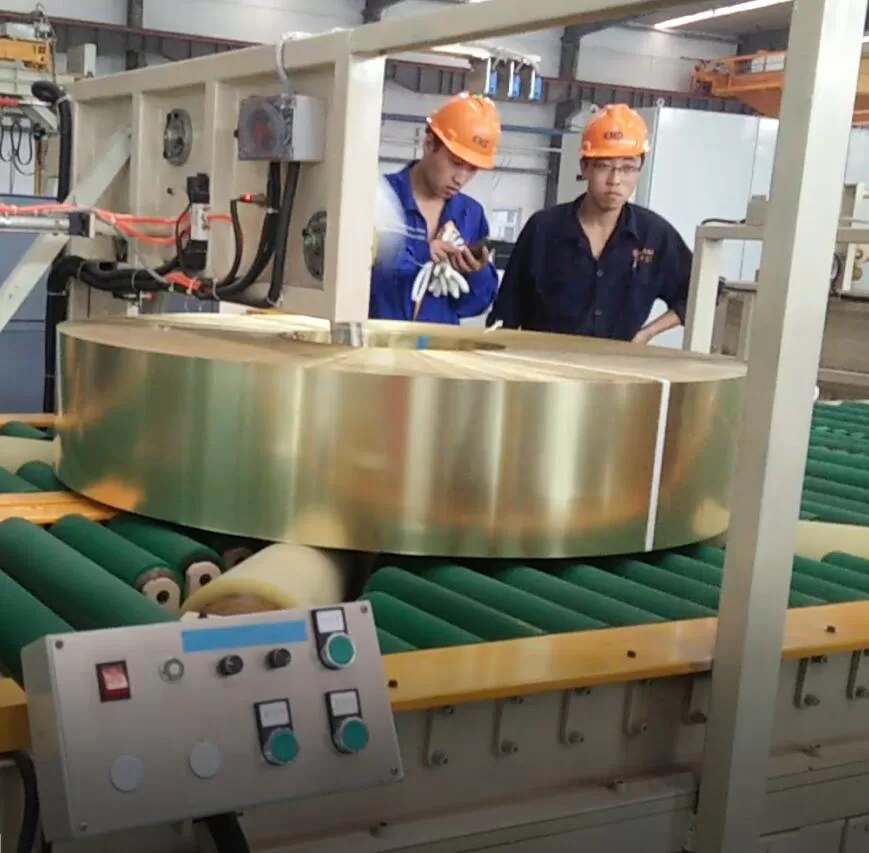
4. The Role of Training and Skill Development
While automation and optimized processes are crucial, the human element remains vital in steel coil packing. Properly trained and skilled personnel are essential for operating equipment effectively, maintaining quality standards, and ensuring a safe working environment. Investing in training and skill development is a key factor in achieving sustained efficiency improvements.
Investing in training and skill development for personnel involved in steel coil packing is crucial for maximizing efficiency and safety. Well-trained operators can operate automated equipment effectively, perform quality checks accurately, and respond efficiently to operational challenges. Skilled personnel contribute directly to higher productivity, reduced errors, and a safer work environment.
Let’s explore the key areas of training and skill development that contribute to improved efficiency in steel coil packing operations.
4.1. Key Areas for Training and Skill Development
Effective training and skill development programs for steel coil packing personnel should cover a range of essential areas to ensure optimal performance and efficiency. These areas include:
- Equipment Operation and Maintenance: Comprehensive training on the operation of all packing equipment, including automated wrapping machines, strapping tools, and conveyor systems. This should include hands-on training, troubleshooting procedures, and basic maintenance tasks to minimize downtime and ensure equipment longevity.
- Packaging Procedures and Standards: Detailed training on standardized packaging procedures, including correct material application techniques, strapping patterns, and labeling requirements. This ensures consistency and quality in packaging and minimizes errors.
- Safety Protocols and Procedures: Thorough training on all safety protocols and procedures relevant to steel coil packing, including safe coil handling techniques, emergency shutdown procedures, and hazard identification. Safety training is paramount for preventing accidents and ensuring a safe working environment.
- Quality Control and Inspection: Training on quality control procedures, including how to inspect packaged coils for defects, identify potential issues, and perform necessary corrections. This ensures that only high-quality packaged coils are dispatched.
- Problem-Solving and Troubleshooting: Developing problem-solving and troubleshooting skills to enable personnel to identify and resolve operational issues quickly and efficiently. This reduces downtime and ensures smooth operation.
-
Continuous Improvement and Efficiency Awareness: Training on the principles of continuous improvement and fostering a mindset of efficiency awareness among personnel. Encouraging employees to identify and suggest improvements to processes and workflows can drive ongoing efficiency gains.
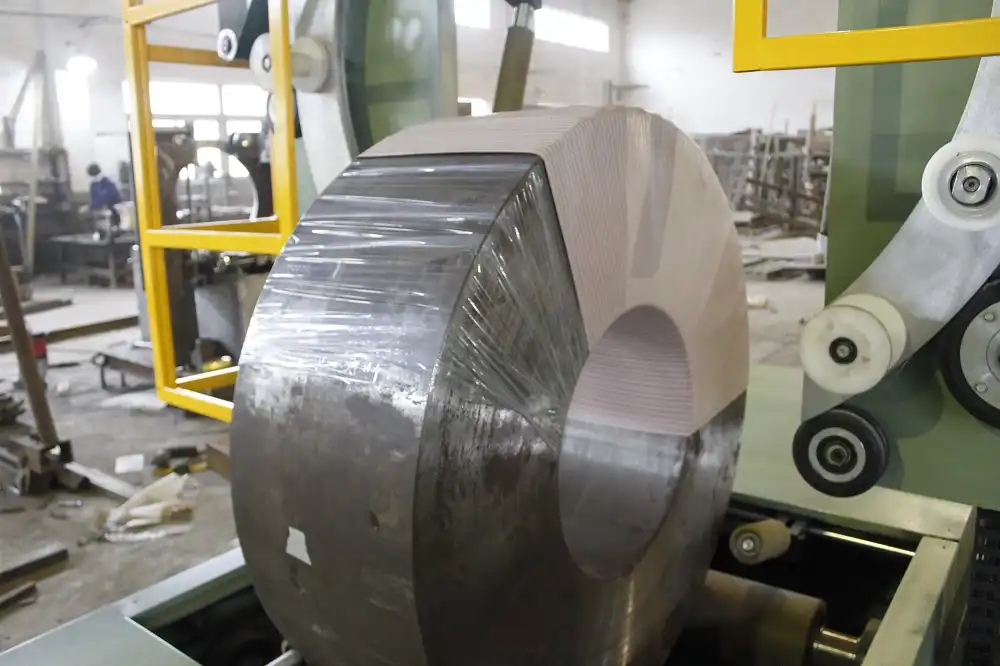
Steel Coil Packing
By investing in comprehensive training and skill development programs in these key areas, businesses can empower their personnel to operate efficiently, maintain high-quality standards, and contribute to continuous improvement in steel coil packing operations.
Conclusion
Improving efficiency in steel coil packing is a multifaceted endeavor that requires a strategic approach encompassing automation, material optimization, workflow streamlining, and personnel training. By embracing automation, businesses can significantly enhance speed, consistency, and safety while reducing labor costs. Optimizing material usage minimizes waste and lowers material expenses, contributing to both economic and environmental benefits. Streamlining workflows eliminates bottlenecks and enhances throughput, maximizing productivity. Finally, investing in training and skill development ensures that personnel are equipped to operate efficiently and maintain high standards. Implementing these strategies in a holistic and integrated manner will pave the way for substantial and sustainable efficiency improvements in steel coil packing operations, ultimately driving greater profitability and competitiveness.


